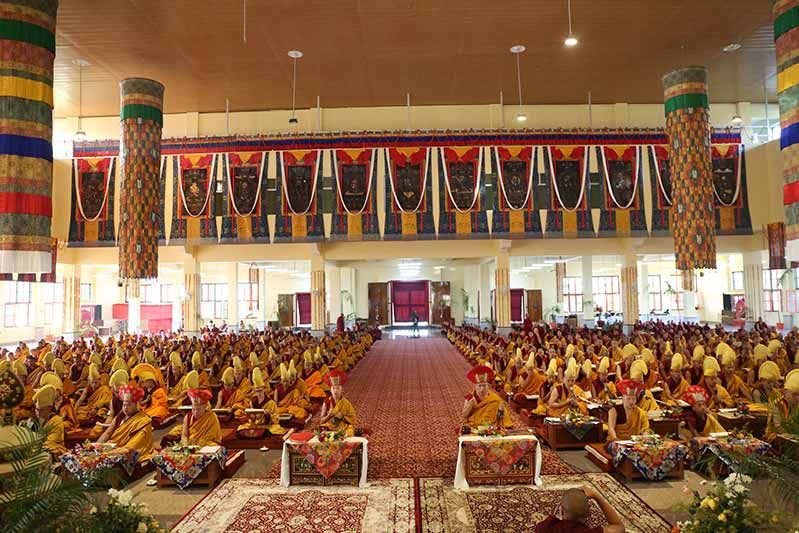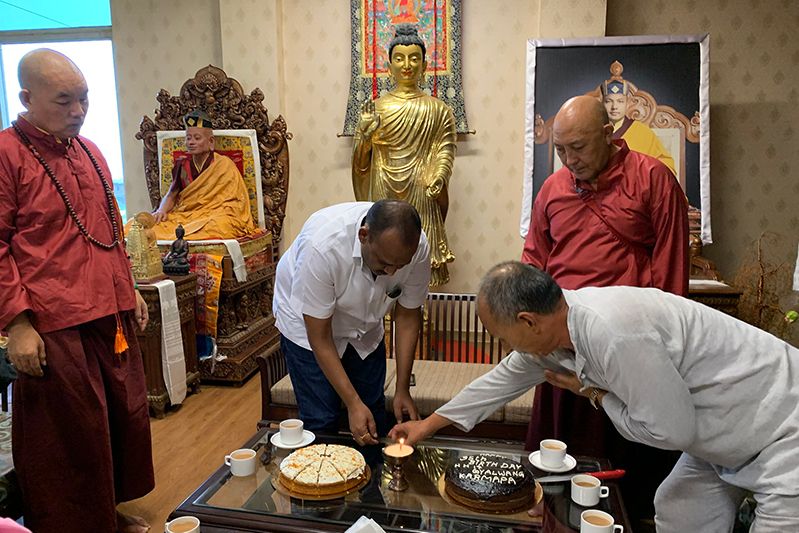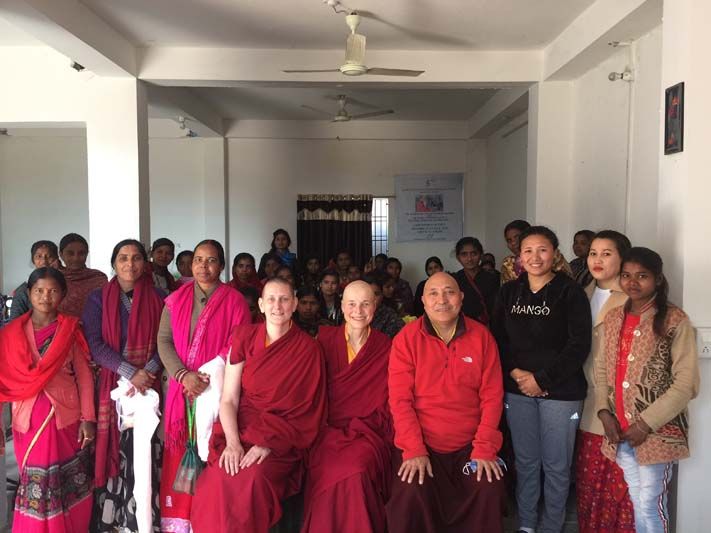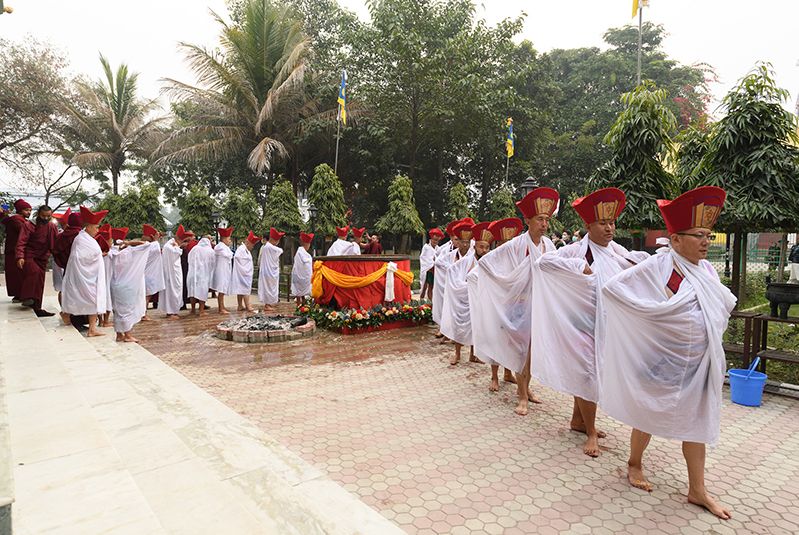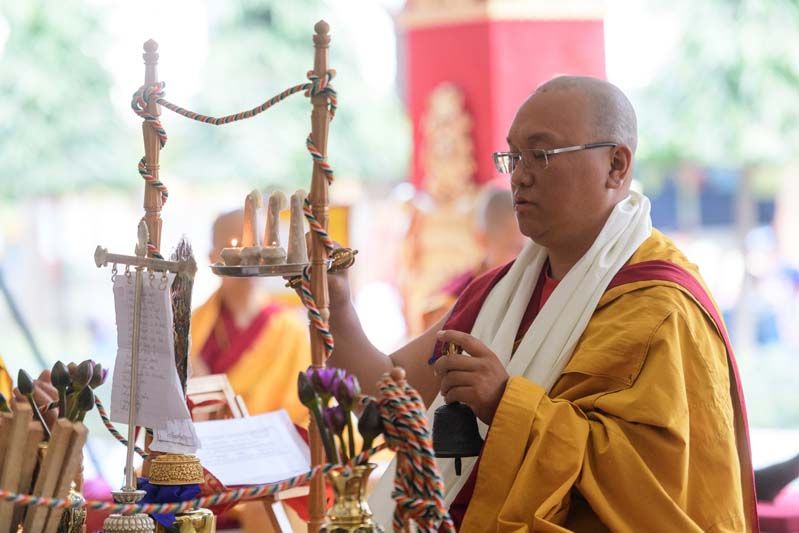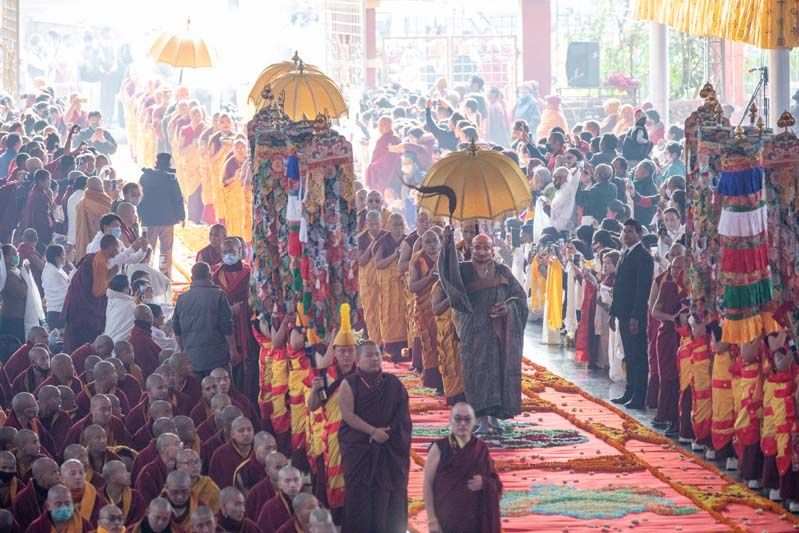Yongey Mingyur Rinpoche on the Four Foundations of Mindfulness Session 6: Understanding Selflessness
- January 29, 2020
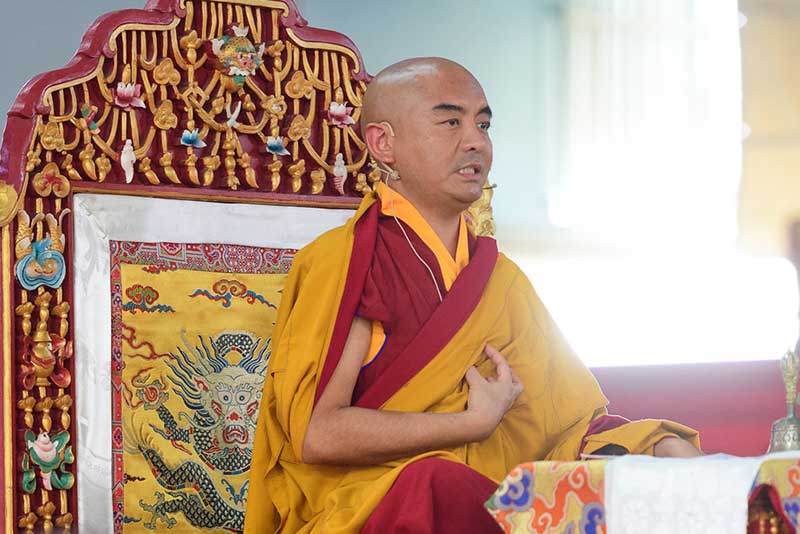
Monlam Pavillion,
January 29, 2020
Using insight meditation to practise mindfulness of mind
Although he had previously emphasised the use of calm-abiding meditation (shamatha), Mingyur Rinpoche explained that in the afternoon session the emphasis would be on the use of insight meditation (vipashyana) and its application to the Four Foundations of Mindfulness.
Insight meditation has three aspects: the tradition shared in common with the Foundation vehicle, insight meditation particular to the Mahayana, and finally the special insight meditation of the Vajrayana. The insight meditation in this case, related to the Four Foundations of Mindfulness, is that shared in common with the Foundation vehicle. The main focus this afternoon would be on the foundation of mindfulness of mind. Rinpoche reviewed the specific characteristics of mind: the mind that knows and understands, the mind that is aware of other objects, and the mind that is manifest to itself. The latter is very difficult and for that reason we use objects for focus in meditation, and the object that we use is thoughts. “Whatever arises, rest simply, Not altering, in just that fresh essence of thought,” he quoted, from the Short Vajradhara Lineage Prayer. That is the practice of mindfulness of mind. When we look at a thought two experiences are possible: the thought disappears or you are able to watch the river of thoughts. Like the river, you are outside it.
The first meditation task in the afternoon session was to look at our thoughts, first with eyes closed, and then with eyes open directed downwards. Rinpoche then commented on the experience. Was it like watching a film, or did the thoughts disappear? If, when you looked, the thought disappeared, it means that the mind was moving into lack of a focus, which is known as shamatha without attributes, and you should just rest in that state. It won’t last long because another thought will come. It’s like waiting for the bus. It comes, you think you’re going to get on, but it drives off! You look at the next thought and it too disappears, so for a brief second you experience shamatha without focus again. And so on. If you are able to look at the thoughts, the thought itself becomes the support for the mind not to be distracted. When you’re focusing on the breath, the breath becomes the support for the mind not to be distracted. If you can look at the thought it becomes a support for you to look at the mind, and, as it changes, you see that it changes, and that is a support for prajna. As you are not trying to block or create thoughts, you also have no attachment or aversion. When the mind gives rise to the nature of prajna, you are able to look at the mind without attachment or aversion and you will gradually be able to see the nature of mind. If an affliction arises, it’s alright to look at it. Pleasant, unpleasant, neutral. Whatever arises is fine. When you look at the nature of the mind it becomes prajna, and the nature of the object will become clearer and clearer.
The specific characteristic of mind is awareness and clarity. The universal characteristic of mind is that it is empty. With the mindfulness of body, we can understand impermanence easily; with the mindfulness of feeling, we understand suffering; with the mindfulness of mind, we can understand that it is empty. We hold this view in common with the Foundation vehicle but by ‘empty’ they mean empty of any singular, permanent, autonomous nature. They maintain that the indivisible instant of mind exists in that moment between the past and the future; within that moment there are sixty-four parts, which are the shortest possible moments of time. In each of these sixty-four parts an indivisible moment of mind exists, cognition. But it’s over in a flash. Without these basic moments of cognition it would be impossible to have thoughts.
Knowing the mind, it appears selfless and empty. It is without shape or colour and it is difficult to find thoughts. If you do find a thought and examine it, you will see that it has many parts. The next meditation demonstrated this.
Imagine a juicy orange in the palm of your hand. Imagine peeling and eating it. But the orange doesn’t exist. This demonstrates how thoughts conflate words and entities. We have the idea, the universal image of the orange, its shape and its name ‘orange’, and simultaneously there is a physical sensation, we begin to salivate, and there is also an experience of attachment, if you like oranges, or aversion, if you don’t. So when we examine that ‘single’ thought ‘orange’, we discover that it has many different parts to it. The same is true of other thoughts such as panic or anger. We believe them to be one thought or idea because of afflicted prajna but that is the wrong view. All of these thoughts are changing from moment to moment. They are all impermanent and their nature is suffering. There is no autonomous anger. All afflictions are empty of permanence, singularity and autonomy. This is the universal characteristic.
The third meditation re-examined the nature of thought.
Close your eyes. Watch the thoughts and afflictions which arise, observing their parts, how they change, and how they are empty of a single, permanent, autonomous nature. Any moments of no-thought are a glimpse of emptiness. Rest in those moments. Open your eyes. Don’t try to change the thoughts. Just look at their nature. Rest how your mind is. Don’t create. Don’t block.
This meditation demonstrated the mindfulness of mind with the universal and specific characteristics of mind, Rinpoche concluded.
The foundation of mindfulness of dharmas.
As with the other three, [mindfulness of body; mindfulness of feeling; mindfulness of mind] the mindfulness of dharmas has specific and universal characteristics. The specific characteristic of a dharma [phenomenon] is that it holds its own character such as a pillar, vase, building, a human being, a cow and so on. There is form which is the object of the eye, sound which is the object of the ear, smell which is the object of nose, flavour which is the object of taste, tangibility which is the object of the body, and so forth. All phenomena appear in the mind; just rest the mind on the object, merely knowing it.
For those who were suffering discomfort while sitting, he suggested it was an excellent opportunity to practise mindfulness of feeling. Whenever we experience pain, such as toothache, the mind always goes directly to the sensation, even when you are trying to do something else. Being able to focus the mind on that sensation of pain will increase the strength of our awareness and be of great benefit to our practice. To suffer pain and adversity is really beneficial.
Mingyur Rinpoche then led a shamatha meditation focusing on sound, which fell into the category of mindfulness of feeling.
Scan your body from your crown to the soles of your feet, looking at any sensations, scan it once more. Don’t spend too much time on any sensation. Now, listen to the sounds. Just hear the sound. (Rinpoche rang a bell.) Whatever sounds there are in the environment, cars outside, people speaking, people coughing…whatever sound you hear is fine…no need to focus on just one…whatever sound you hear merely know it, be aware of that sound.
Gradually open your eyes and focus on any object in front of you. Merely know it and be aware of it.
Rinpoche then questioned everyone’s experiences during the meditation. Was it easier to focus on sound or form? People have different constitutions, he explained. In some systems of meditation, beginners start with sounds and forms at the beginning of the practice. However, he advised, it is better to practise whichever of the four foundations you find easiest at first. As you gain experience, you can move on to another foundation. Most people find sound the easiest. He suggested that the evening meal could be a chance to practise focusing on smell and taste. “While you are eating, eat slowly, feel it in your mouth, don’t eat it immediately like a dog eating a kidney! Chew it, savour the flavour.”
It is said that all the other foundations of mindfulness are aspects of the foundation of mindfulness of dharmas. As we have to go through all four characteristics—impermanence, suffering, selflessness, and emptiness—we study and practise the other three foundations first. Finally, we arrive at the foundation of the practice of mindfulness of dharmas which is primarily for the understanding of selflessness. The sound that appears to the ear, the form that appears to the eye, and so forth, are specific characteristics. The universal characteristic is selflessness.
When we consider phenomena, within the five aggregates of our body and mind we cannot find a separate self. On the basis of our body, feelings, formations and consciousnesses, when we examine it, there is no singularity; there are many parts, and everything is in a state of flux. Thus we realise selflessness. There is no ‘me’. That idea of ‘me’ is a construction and not valid. It is essential to understand that, to develop that prajna, but it should not be forced or created artificially. Rinpoche repeated an anecdote he had heard from Tai Situ Rinpoche about a Westerner who was determined to get rid of ‘me’ and so stopped using the words ‘I’ and ‘me’. He went crazy in the end.
The heart of the problem is ego-clinging. When you recognise the true nature of the object, the ego-clinging will gradually and naturally dissolve, like darkness disappears when the sun shines, or like early morning mist dissipates. For this reason, you go through impermanence, suffering, selflessness and emptiness. Consequently, all thoughts and afflictions will be pacified, and the mind will become peaceful and joyful. As the Gyalwang Karmapa always says, this internal happiness is superior to any given by an external object. All worldly states of happiness are impermanent; they are subject to the suffering of change. The moment we realise the nature of egolessness, the mind becomes more spacious, more pliable, and wherever you go becomes pleasant.
Mingyur Rinpoche concluded the afternoon teaching with an overview of the results of this practice.
By practising the four foundations of mindfulness, he assured us, “You will gradually move from the lesser path of accumulations to the medium and to the greater, and you will go through all 37 factors of mindfulness. All these will occur as a result of meditation on the four foundations of mindfulness.”
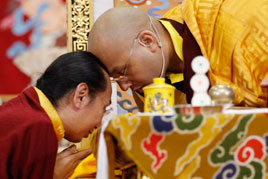
37th Kagyu Monlam Schedule
Tibetan / English / Chinese • French • German • Indonesian • Korean • Polish • Russian • Spanish • Vietnamese
Dharma Teachings
 Meditation Instructions
Meditation Instructions
Recorded during the 37th Kagyu Monlam, Bodhgaya, India. January 28-30, 2020.

